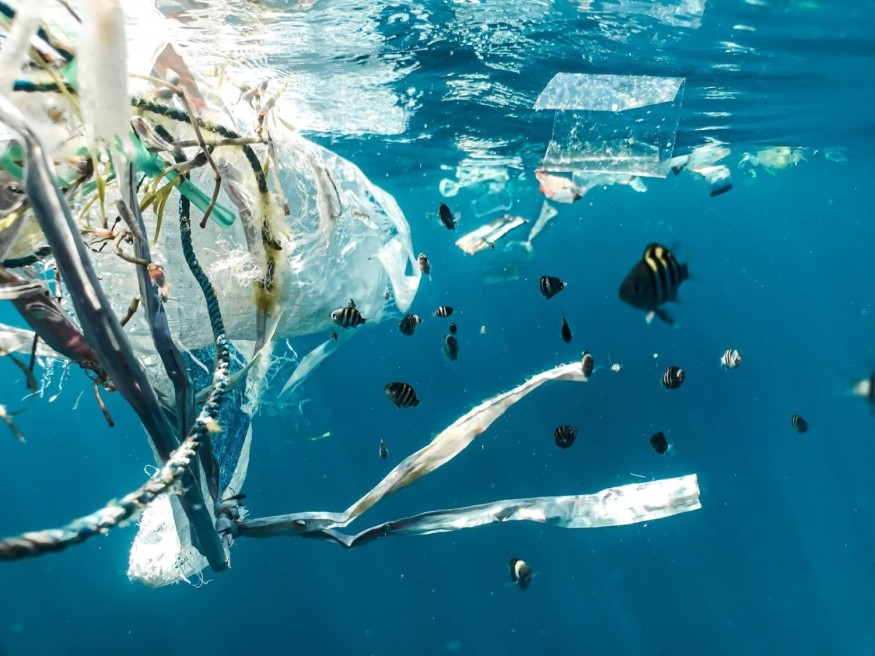
Most people, in the US at least, only know about hermit crabs because they've seen them offered for sale as pets at seaside holiday destinations. Most wouldn't know that there are multiple kinds of hermit crabs, some of which live on land while others live underwater.
In fact, there are over 800 species of hermit crab known to scientists, the vast majority of which live underwater. That means most of the global hermit crab population is vulnerable to changes in the makeup of Earth's oceans, as well as from the introduction of chemicals and other pollutants to them. Among these, the recent explosion in the quantity and variety of microplastics found in oceans around the world represents a major threat to hermit crabs.
Here's some background information on the rising tide of microplastics in our oceans and two of the already-known ways they're threatening the global underwater hermit crab population.
What Are Microplastics?
Plastics, in general, make up the most common type of non-natural debris found in Earth's oceans today. And although that debris comes in a variety of sizes and shapes, marine biologists are increasingly concerned about the unique threat that microplastics seem to represent. According to National Geographic, microplastics are "tiny plastic particles that result from both commercial product development and the breakdown of larger plastics."
Among plastic debris that qualifies as microplastic, scientists are most concerned about microbeads. Those are deliberately-manufactured polyethylene microplastics commonly used as exfoliating agents in health and beauty products, as well as in certain toothpaste and cleaning products. Since they're a relatively new addition to the global oceans' microplastic problem, the full scope of their threat is still unknown. That doesn't mean, however, that marine hermit crabs aren't already in danger from microplastics.
Exposure to Microplastics Alters Hermit Crab Behavior
Unlike land hermit crabs, who rely on gills and branchiostegal lungs to breathe, marine varieties of the species extract oxygen from the water instead. This makes them vulnerable to ingesting toxins found in the oceans. And according to at least one study, hermit crabs that ingest microplastics from their environment suffer some life-altering effects.
The study found that marine hermit crabs displayed weaker attacking behavior when in conflict with other hermit crabs and an inability to assess the threat an attacker posed. The changes led to the exposed hermit crabs giving up their shells earlier than they should have, which increased their risk of death. A follow-up study further noted that microplastic-exposed hermit crabs demonstrated impaired shell selection, further decreasing their odds of long-term survival.
Microplastic Additives Confused for Food
Another study on the effects of microplastics on marine hermit crabs uncovered another disturbing side effect. In this case, the study found that a common additive in microplastics-Oleamide-can mimic oleic acid, which marine hermit crabs look for while scavenging for food. In a non-polluted marine environment, decaying arthropods release oleic acid, which serves as an attractant for hermit crabs in search of a food source.
In today's oceans, the presence of microplastics in sufficient quantity can alter marine hermit crabs' odds of finding reliable food sources. The Oleamide released from the microplastics can draw hermit crab populations to locations where food is scarce or unavailable, leaving them vulnerable to starvation. It's a problem that suggests that the ever-increasing amount of microplastics in the world's oceans could come to pose an existential risk for hundreds of species of marine hermit crabs.
The Takeaway
The key takeaway here is that although the full effects of microplastics on hermit crabs-and marine life writ large-are still mostly unknown, what we do know paints a disturbing picture. With approximately 51 trillion microplastics already floating on the surface of the world's oceans, and many times that number likely at depth, it's an ecological problem that could spiral out of control fast. And with multiple documented detrimental effects already known for marine hermit crabs, they could end up facing premature extinction. Worse still, they could be just the first of many marine species to face annihilation due to microplastics. In any case, further research and stepped-up mitigation efforts are both necessary and prudent, lest microplastics do even more irreparable harm to the world's marine life.
© 2025 ScienceTimes.com All rights reserved. Do not reproduce without permission. The window to the world of Science Times.












